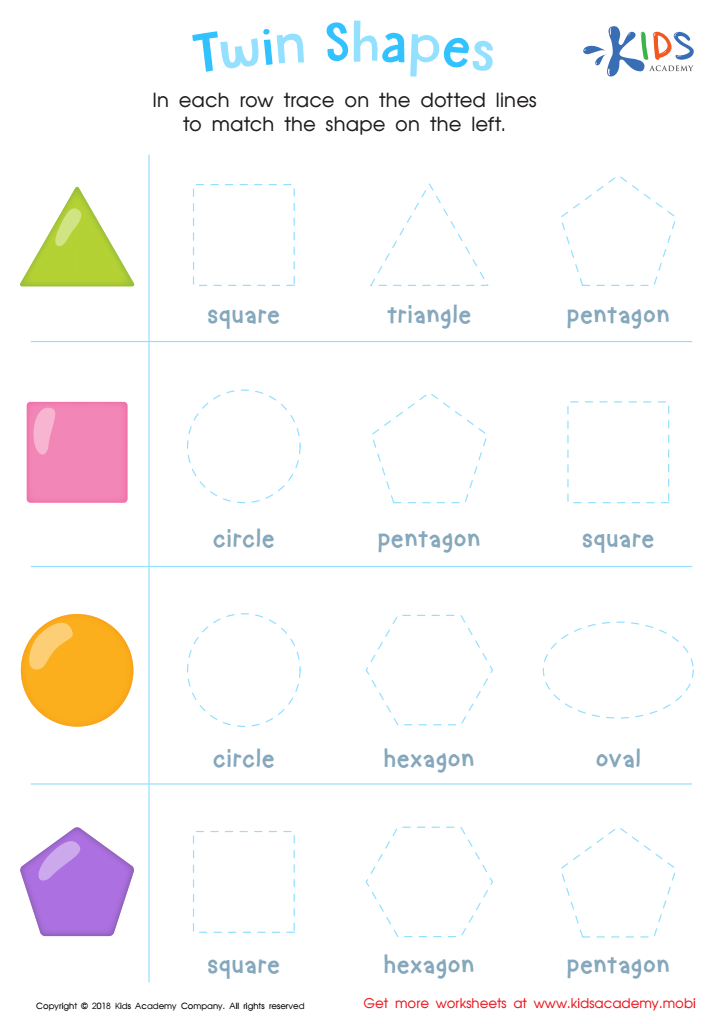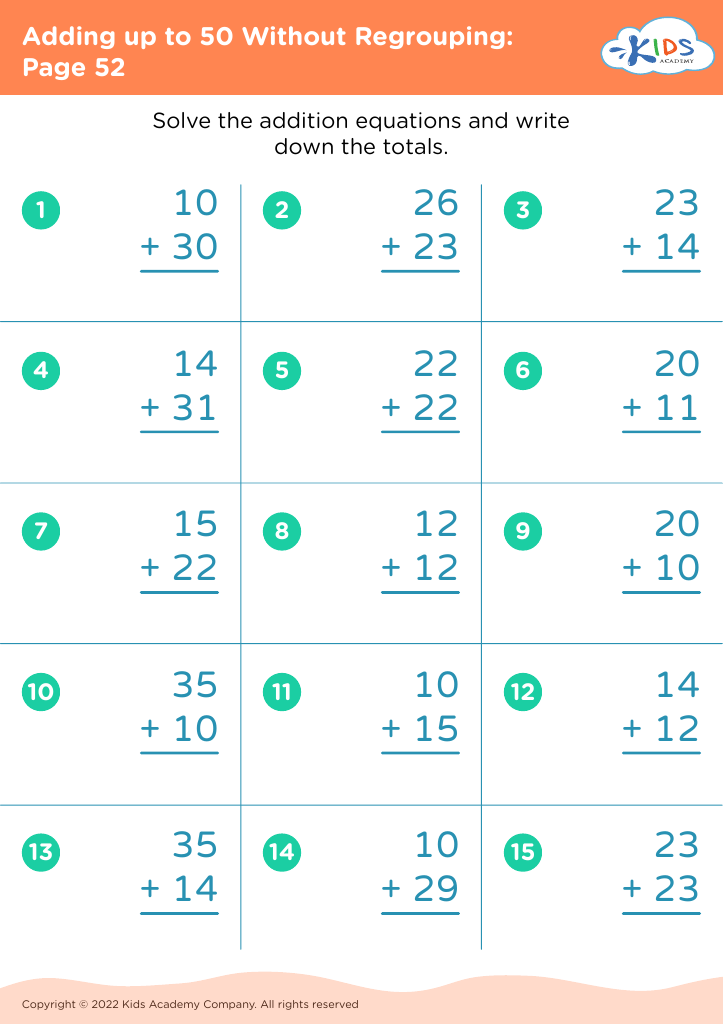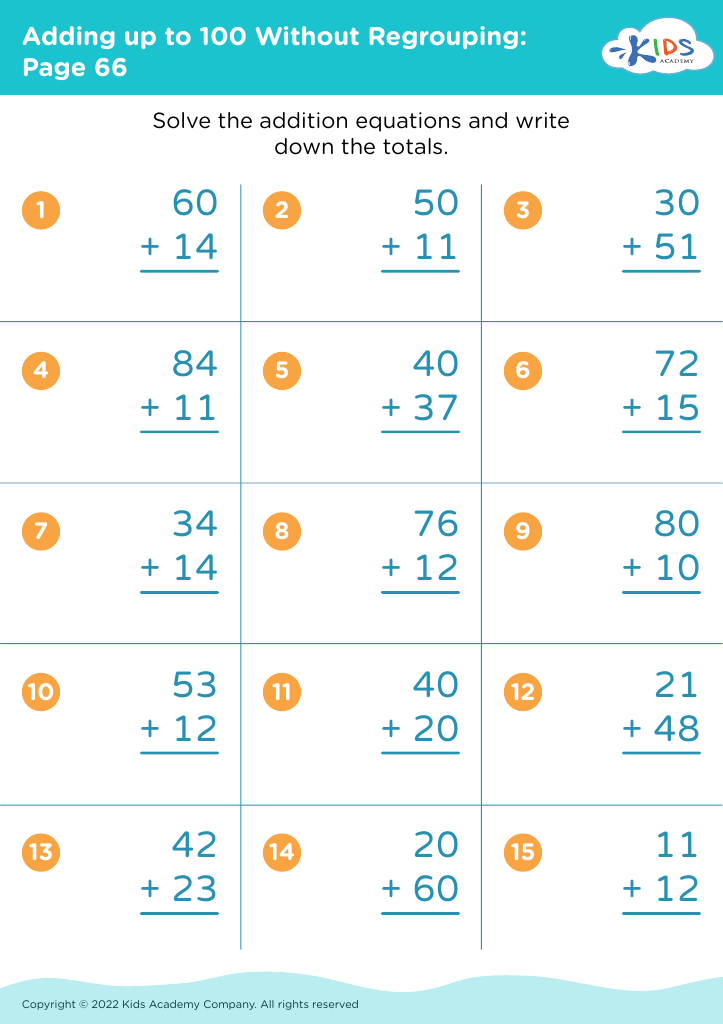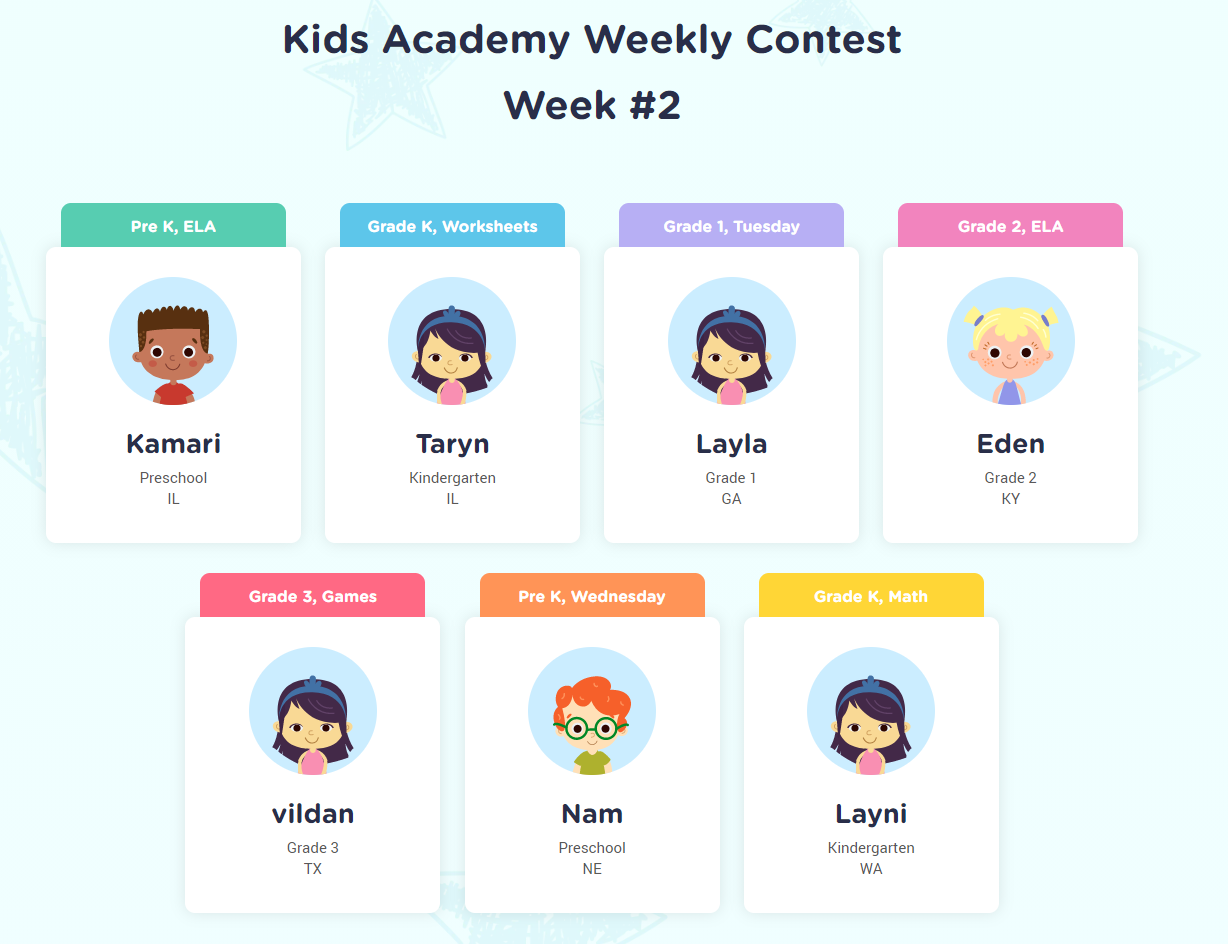Comparing shapes Math Worksheets for 8-Year-Olds
4 filtered results
-
From - To
Boost your child's geometry skills with our Comparing Shapes Math Worksheets designed for 8-year-olds! These engaging resources help kids identify, analyze, and compare various shapes, enhancing their understanding of geometric concepts. Each worksheet features fun, interactive exercises that challenge students to distinguish shapes based on size, color, and other attributes. Perfect for classroom or at-home learning, these worksheets can ignite a passion for math through hands-on activities. Nurture critical thinking and problem-solving abilities with our expertly crafted materials. Explore a world of shapes today and watch your child’s confidence soar in math!


Congruent Shapes Worksheet


Twin Shapes Dot-to-Dot Worksheet
Comparing shapes is a foundational skill for 8-year-olds that sets the stage for more advanced mathematical concepts and critical thinking skills. Parents and teachers should prioritize this area of math as it cultivates spatial awareness and geometric reasoning. Understanding shapes involves recognizing various attributes such as the number of sides, angles, and symmetry, which are vital for comprehending more complex topics like algebra and calculus later on.
Additionally, comparing shapes enhances problem-solving skills and cognitive development. It encourages children to observe, analyze, and classify based on physical characteristics, promoting higher-order thinking. This skill also translates to real-world applications, such as reading maps, packing efficiently, and understanding architectural designs.
Moreover, engaging children in such activities can make learning math fun and interactive. Activities like sorting blocks, drawing shapes, or using digital tools can enrich their learning experience and foster a love for mathematics. Lastly, discussing different shapes and their properties can build communication skills, as children explain their thought processes and reasoning.
In essence, focusing on shape comparison for young learners builds a strong mathematical foundation, enhances critical thinking, and fosters a deeper, more intuitive understanding of the world around them—even influencing their future academic and everyday success.



 Assign to My Students
Assign to My Students




















